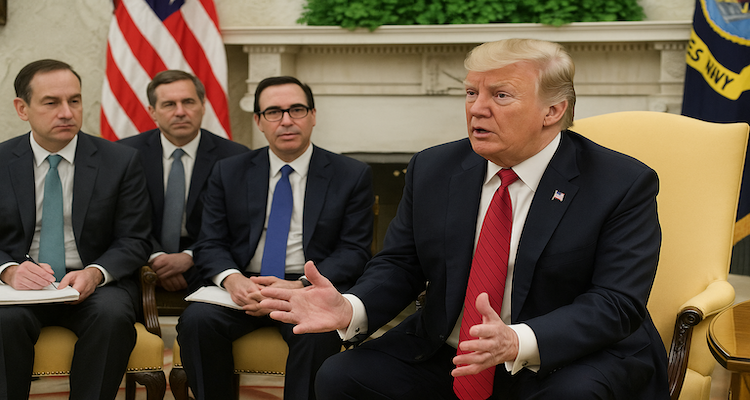Honda Faces Mounting Strain as Chinese EV Rivals Gain Speed
Honda cuts profit outlook amid U.S. tariffs, chip shortages, and rising competition from Chinese EV makers, exposing deep challenges across Asian markets.
A Wake-Up Call for Japan’s Auto Giant
Honda Motor Co. is facing one of its toughest years yet. The automaker slashed its full-year profit forecast by 20%, citing U.S. tariffs, chip shortages, and mounting competition from China’s fast-expanding electric vehicle (EV) manufacturers. While immediate pressures weigh on its balance sheet, the deeper concern for Honda and Japan’s auto industry as a whole, is the accelerating loss of dominance in Southeast Asia, once a secure stronghold for Japanese brands.
Global Pressures Hit Hard
Japan’s second-largest automaker made the downgrade announcement after markets closed Friday, revealing a 385 billion yen ($2.6 billion) tariff-related hit, slightly less than earlier projections. The company also blamed a shortage of semiconductor components from Dutch firm Nexperia, recently placed under the control of the Netherlands government after being owned by China’s Wingtech.
These compounded setbacks underscore a growing sense of unease across Japan’s auto industry, already grappling with shrinking global market share. On Monday, Honda’s stock slid nearly 5%, reflecting investor concern that the problems may go far beyond temporary supply constraints.
Southeast Asia No Longer Safe Ground
Honda executives now admit that their long-held assumption, that Southeast Asia would remain insulated from China’s auto surge, no longer holds true. “In markets like Thailand, the competitive environment has become extremely fierce, and we’ve lost our pricing edge,” Executive Vice President Noriya Kaihara acknowledged during a recent press briefing.
To sustain sales, automakers are cutting prices and rolling out consumer incentives, a strategy that is eating into already thin margins. Honda now expects to sell just 925,000 vehicles across Asia this fiscal year, down over 10% from its earlier projection of 1.09 million. The shortfall is especially steep outside of China, where expected sales have plunged by 75,000 units from prior estimates.
Chinese EV Makers Surge Across the Region
Chinese automakers led by BYD are rapidly reshaping Southeast Asia’s automotive landscape. Once dominated by Japanese brands, markets like Thailand and Indonesia are now witnessing explosive growth in Chinese EV sales. “The growth of Chinese EVs in Thailand over the past two years has been extraordinary,” said an industry insider familiar with regional sales trends.
This expansion comes as China’s domestic auto market becomes oversaturated and price wars intensify, prompting manufacturers like BYD to expand overseas. As a result, Honda’s retail sales dropped sharply, down nearly 30% in Indonesia, 18% in Malaysia, and 12% in Thailand during the first nine months of the year.
Adding to the challenge, Honda has no major new models slated for Southeast Asia in the near term, aside from an updated City sedan. That gap could allow Chinese competitors to tighten their grip further.
India Emerges as a Lifeline
With China-dominated markets becoming increasingly hostile, Japanese automakers are turning toward India, a market largely closed to Chinese EV makers. Honda recently announced plans to make India a central hub for electric car production and exports, emphasizing its strategic importance as the world’s third-largest auto market.
Rivals Toyota and Suzuki are following similar paths, investing a combined $11 billion to expand local manufacturing and export capacity. But analysts warn that even this pivot may not fully offset Honda’s deeper structural issues.
A Company Divided
Honda’s troubles extend beyond regional competition. The automaker’s core automotive division posted its third consecutive quarterly operating loss, in stark contrast to its motorcycle division, which continues to deliver record profits.
“The gap between the two businesses is striking,” said Yoshio Tsukada, founder of the Tsukuda Mobility Research Institute. “If Honda split its motorcycle and car units, the two-wheeler business could thrive globally. The automotive side, however, remains in serious trouble.”
Overall, Honda reduced its global vehicle sales forecast to 3.34 million units from a previous estimate of 3.62 million, with a significant portion of the decline linked to ongoing chip supply disruptions from Nexperia.
North America: Tariffs and Chip Woes Bite Deeper
The United States remains Honda’s largest market, accounting for 42% of its global sales, up slightly from last year. But the North American market is not immune to the headwinds. Tariff pressures, chip shortages, and temporary factory closures in Mexico have forced production slowdowns in both the U.S. and Canada, cutting roughly 150 billion yen ($995 million) from Honda’s operating profit forecast.
Despite the growth in U.S. sales volume, Honda’s shares are down 1.4% year-to-date, lagging far behind Japan’s Nikkei 225 index, which has soared nearly 28%.
A Test of Resilience for Japan’s Auto Legacy
Honda’s financial strain mirrors broader turbulence within Japan’s automotive sector. Nissan and Mitsubishi Motors, once rumored merger partners for Honda, face similar strategic challenges. Tsukada dismissed the prospect of renewed talks, noting that “a merger among Honda, Nissan, or Mitsubishi right now would simply be an alliance of the weak.”
As the global auto industry pivots toward electrification, Chinese manufacturers continue to expand aggressively into markets long dominated by Japanese brands. For Honda, the road ahead will require more than temporary cost adjustments—it demands a fundamental shift in strategy, innovation, and speed.
A Pivotal Crossroads
Honda’s latest profit cut is more than a financial setback, it’s a wake-up call. The company’s struggles reveal how quickly the automotive landscape is changing and how vulnerable even long-established players have become. As electric vehicle technology advances and Chinese competitors accelerate, the race for dominance in Asia and beyond is entering a decisive phase one that will test Honda’s ability to reinvent itself before it’s too late.
(Disclaimer: This article is based on verified reports and corporate statements. All financial data and quotes are accurate as of publication time.)
ALSO READ: U.S. and Switzerland Edge Toward Tariff-Cutting Trade Deal










